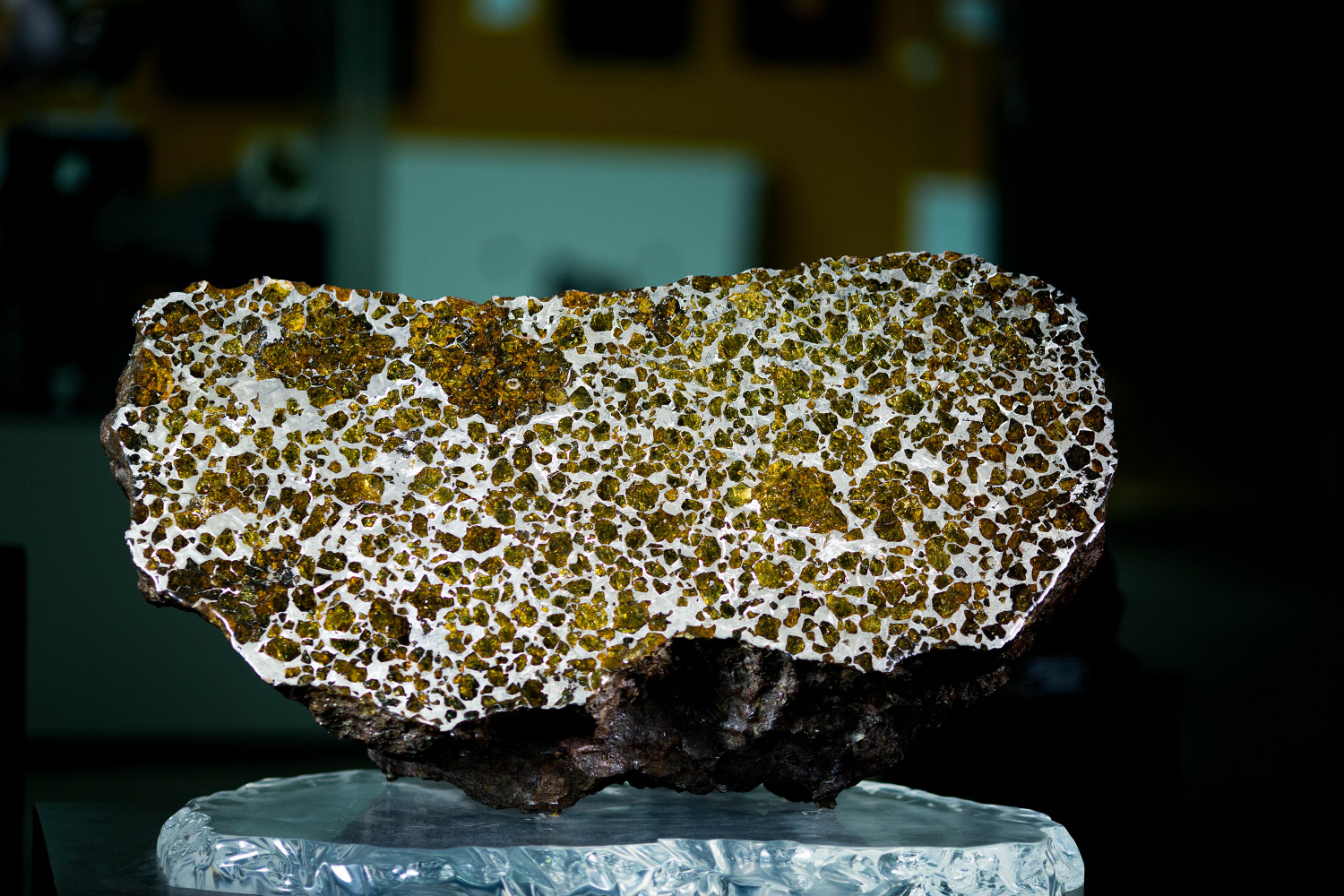

And if the person chooses the rare and famous rock can be broken into tiny slices – and be sold at US$40 a gram. The Fukang meteorite is 4.5 billion years old and weighs one ton. So if we go to the work according the costs given above, that would mean the person who buys the big piece will have 420,000 grams. Weighing more than 925 pounds (approx 420 kilograms), what remains of the Fukang meteorite is expected to bring in a figure in excess of a US$1m at the auction. The Fukang meteorite has been classified. It is estimated to be 4.5 billion years old. It is a pallasitea type of stonyiron meteorite with olivinecrystals. kings fine jewellery, opal necklace harry potter, vibha jewellery with. Bonhams auction house offered the main mass for sale in 2008, although with an expected price of two million dollars. The Fukang meteorite is a meteorite that was found in the mountains near Fukang, China in 2000.

It is a pallasite a type of stonyiron meteorite with olivine crystals. Pallasite is a stony-iron meteorite containing olivine crystals. The Fukang meteorite is a meteorite that was found in the mountains near Fukang, China in 2000. The “main mass” of the meteorite, a distinction considered highly desirable by meteorite collectors, is to be sold at auction by international fine art auctioneers Bonhams on Wednesday, April 30, 2008, at its salerooms in New York. The Fukang Meteorite was recovered in China in the year 2000 as a single large mass weighing slightly over one ton. Shop the cheapest selection of fukang meteorite jewelry, 53 Discount Last 1 Days. The Fukang meteorite was discovered in the mountains of Fukang, China, in 2000. But now the big daddy itself is upon sale. In China in 2000, the mysterious fukang meteorite, unearthed believed to be some 4.5 billion years old, which is as ancient as Earth itself. The Fukang Meteorite was found to be of a type of stony-iron meteorite known as Pallasite. Originally weighing 1003 kg, the specimen has been broken up as it is so rare and significant and beautiful than small pieces fetch between US$30 and US$50 per gram on the open market. I was looking for what to do, and I found that there is a kind of 'glowstone' in real life, called Fukang Meteorite, so I decided to do it, and here it is Hope you like Progress. The extremely rare and beautiful Pallasite meteorite is thought to have originated at the mantle-core boundary of very large differentiated asteroids that were destroyed during the early formation of the solar system over 4.5 billion years ago. H/t: twistedsifter, you’re a meteorite enthusiast you already know about the Fukang Meteorite that was discovered in the Gobi desert in China eight years ago. He was always fascinated by the unique rock. The meteorite was accidentally discovered by a hiker who often rested on the rock to have his meal. Fukang Meteorite Slice Pallasite, PMG Fukang, Xinjiang Uygur Province, China - (44 26N, 87 38E) - Available at 2019 July 20 Nature & Science. the Carancas meteorite that fell onto Peru in 2007159, and the Almahata Sitta meteorites. In 2008 they attempted to sell it at auction at Bonham’s in New York for approximately $2 million but did not receive any bidders.Ī total of 31 kilograms (68 lb) of the specimen is on deposit at University of Arizona’s Southwest Meteorite Laboratory. Found in a small town in China’s Xinjiang Province fifteen years ago, the Fukang Meteorite is considered by many as the most beautiful extraterrestrial rock ever found by man. the Fukang meteorite which fell onto China in 2000157. The Fukang pallasite is believed to originate from deep inside intact meteors created during the formation of the solar system about 4.5 billion years ago and very few specimens are thought to have survived their descent through Earth’s atmosphere.Īn anonymous group of collectors currently holds the largest portion which weighs 419.5 kg (925 pounds). Pallasites are extremely rare even among meteorites (only about 1% of all meteorites are this type) and Fukang has been hailed as one of the greatest meteorite discoveries of the 21st century. Named the ‘Fukang meteorite‘, it was identified as a pallasite, a type of stony–iron meteorite, with striking olivine crystals throughout. Back in the year 2000, a 1,003 kilogram (2,211 lbs) meteorite was discovered near Fukang, a city located in the northwestern region of Xinjiang, China.


 0 kommentar(er)
0 kommentar(er)
